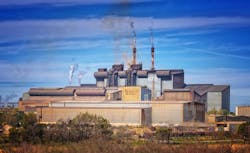LEED should be updated to combat climate change
By Peter Fabris, Contributing Editor
Although LEED has advanced sustainability in the built environment, it hasn’t kept up with the accelerating urgency of climate change or the availability of low and no-cost ways to deeply cut carbon, says Greg Kats, president of Capital E.
Kats is a clean energy investor and was the first recipient of the U.S. Green Building Council Lifetime Achievement Award. He cites a 60% cost reduction of residential solar since 2010 that “make these now the cheapest electricity source in most states.”
Also, rapid growth in the ability to buy onsite and offsite solar and wind under power purchase agreements (PPAs) allows building owners to buy carbon-free power at a fixed price at or below conventional utility rates, Kats says. “Many buildings receiving LEED Silver, Gold, and even Platinum ratings deliver an anemic 15% or 20% lower energy use and CO2 reduction,” he says.
Kats and other environmental leaders have submitted a proposal to USGBC in support of minimum levels of carbon reduction by level of LEED certification. “LEED immediately should be revised to require substantial minimum carbon reductions for each level of LEED certification, both for new LEED buildings and for LEED rating renewals,” Kats says.
